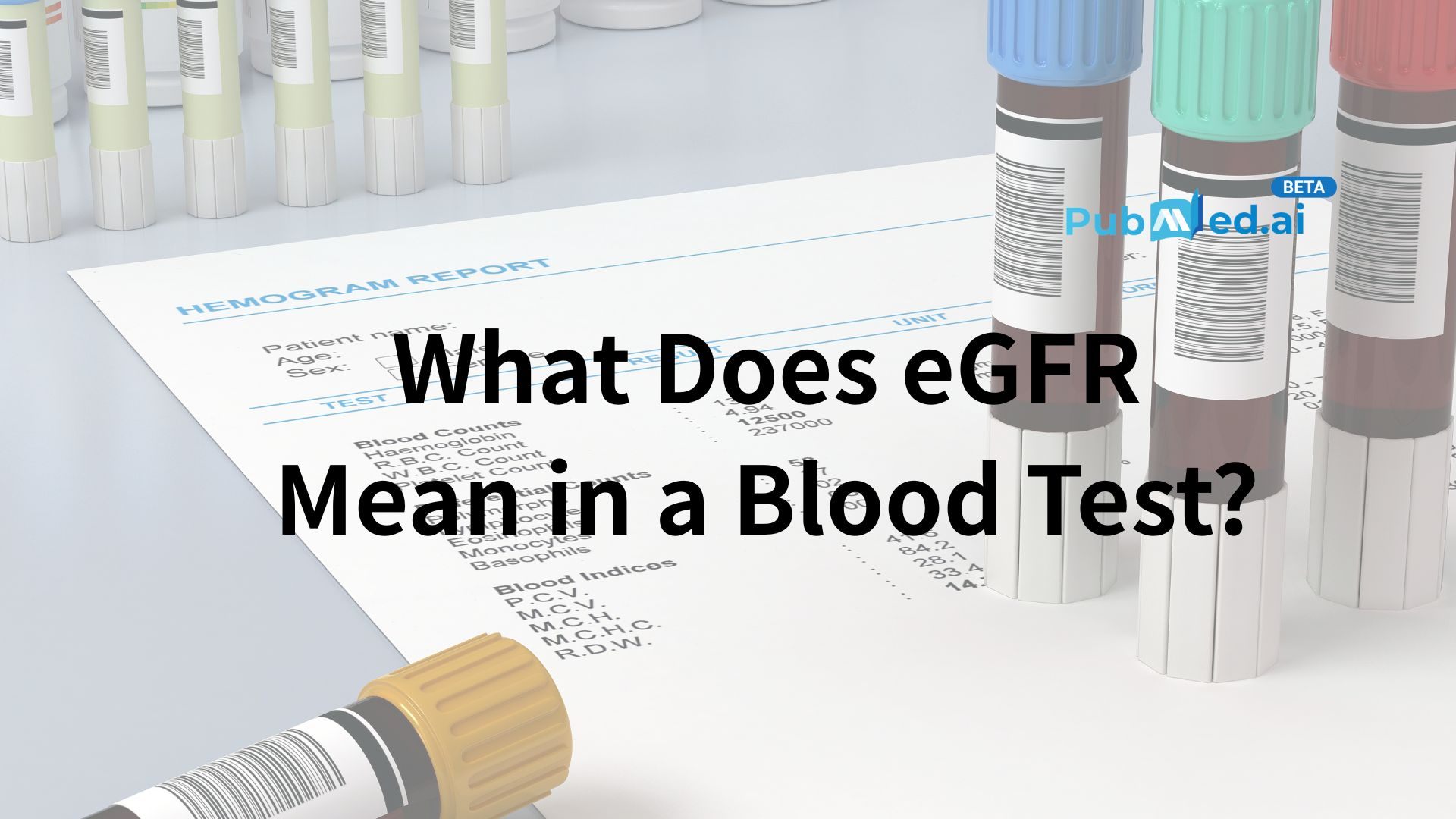What Does eGFR Mean in a Blood Test? Understanding Kidney Function

eGFR, or estimated glomerular filtration rate, measures how efficiently your kidneys filter waste from your blood. In practical terms, it reflects kidney function: a higher eGFR generally indicates healthy kidneys, while a lower eGFR may signal impairment. Clinicians rely on eGFR to detect early-stage kidney disease, monitor progression, and guide therapeutic decisions. This makes “what does eGFR mean in a blood test” a common question among patients, students, and biomedical researchers alike.
Unlike serum creatinine alone, which can vary with muscle mass, age, and sex, eGFR provides a normalized estimate of kidney filtration. It’s calculated using formulas such as CKD-EPI or MDRD, incorporating serum creatinine, age, sex, and sometimes race, giving a more accurate picture of renal performance. Tools like an eGFR calculator can help interpret these values quickly, although professional consultation remains essential.
Check this answer from PubMed.ai
Normal eGFR Values
Understanding eGFR ranges is crucial. The normal range for eGFR in blood tests varies slightly with age and sex:
- Adults under 40: 90–120 mL/min/1.73 m²
- Adults 40–60: 75–110 mL/min/1.73 m²
- Adults over 60: 60–89 mL/min/1.73 m², reflecting age-related decline
For example:
- eGFR 90 means kidney function is normal, whereas an eGFR 60 may indicate mildly reduced filtration.
Many wonder, “what is a normal GFR for a 70-year-old?” Slightly lower values are expected due to aging, but consistently low readings require further evaluation.
For authoritative guidance, the National Kidney Foundation provides detailed guidelines on interpreting eGFR by age and sex, helping clinicians and researchers contextualize these numbers.
What Low or High eGFR Indicates
Low eGFR values are clinically significant and may reflect:
- Chronic kidney disease (CKD)
- Acute kidney injury
- Dehydration or temporary physiological changes
- Medication effects, including certain NSAIDs or contrast agents
CKD is staged according to eGFR:
- Stage 1: ≥90, normal function with other markers of kidney damage
- Stage 2: 60–89, mild decrease
- Stage 3: 30–59, moderate decrease
- Stage 4: 15–29, severe decrease
- Stage 5: <15, kidney failure
Conversely, high eGFR values, such as those occasionally observed with high eGFR CKD-EPI readings, may suggest hyperfiltration, sometimes seen in early diabetes or after fluid overload. These readings require context and correlation with other clinical parameters.
Racial adjustments are relevant when interpreting eGFR. Terms like “eGFR non-African American” and “eGFR AA” indicate calculations with or without race-based adjustment. Modern CKD-EPI formulas strive for accuracy across diverse populations, reducing bias in assessment.
Factors That Affect eGFR
Several physiological and external factors influence eGFR readings:
- Age and sex: GFR naturally declines with age; men often have higher baseline values due to greater muscle mass.
- Muscle mass: Creatinine derives from muscle, so highly muscular or very lean individuals may show skewed eGFR.
- Hydration status: Dehydration may temporarily lower eGFR, leading to readings that suggest impaired kidney function.
- Medications: NSAIDs, antibiotics, and contrast dyes can transiently reduce eGFR.
- Underlying conditions: Diabetes, hypertension, and autoimmune diseases can significantly affect renal filtration.
Two individuals with identical serum creatinine can have markedly different eGFRs depending on age, sex, and body composition. This highlights why understanding what does eGFR mean in a blood test when it is low requires a broader clinical perspective.
Interpreting Specific eGFR Values
- eGFR 60: Mildly reduced kidney function, often stage 2 CKD if persistent.
- eGFR 90 means: Normal renal function.
- eGFR 77: Slightly below optimal, may be age-appropriate or indicate early decline.
- eGFR 60 in a blood test: Usually triggers follow-up, especially if combined with proteinuria or other risk factors.
These interpretations are essential for both clinicians and biomedical students, particularly when using CKD staging charts to understand disease progression.
Protecting and Maintaining eGFR
While some decline is expected with aging, kidney health can be preserved:
- Hydration: Adequate fluids support optimal filtration.
- Blood pressure and glucose control: Hypertension and diabetes are leading causes of CKD.
- Avoid nephrotoxic medications: Long-term NSAID use or unmonitored supplements may harm kidneys.
- Balanced diet: Moderate protein, reduced sodium, and plenty of vegetables support renal health.
- Regular monitoring: Periodic eGFR checks allow early detection of changes.
These interventions are particularly relevant for those concerned with egfr blood test low results, helping prevent further decline.
FAQs About eGFR
1. What does eGFR 60 mean in a blood test?
Mildly reduced kidney function; follow-up and monitoring are recommended.
2. What is normal GFR for age 70?
60–89 mL/min/1.73 m² is generally considered normal due to age-related decline.
3. What does high eGFR CKD-EPI mean in a blood test?
It may indicate hyperfiltration; clinical correlation is necessary.
4. What does eGFR non-African American mean in a blood test?
This refers to an eGFR calculation without race-based adjustment.
5. Can eGFR be improved naturally?
Yes, through hydration, diet, blood pressure control, and avoiding kidney stressors.
6. What does eGFR 90 mean?
Indicates normal kidney filtration, reflecting healthy renal function.
7. What does eGFR CKD-EPI mean in a blood test?
It refers to eGFR calculated using the CKD-EPI formula, commonly used in adults for more accurate kidney assessment.
For researchers, students, and clinicians who want to explore kidney function more deeply, PubMed AI offers a powerful platform to search, summarize, and analyze biomedical research efficiently, including studies on eGFR, CKD, and renal interventions.
Disclaimer:
This AI-assisted content is intended for academic reference and informational purposes only and does not constitute medical advice, diagnosis, or treatment. Always consult qualified healthcare professionals regarding any medical condition or treatment decisions. All risks arising from reliance on this content are borne by the user, and the publisher assumes no responsibility for any decisions or actions taken.

Have a question about medical research, clinical practice, or evidence-based treatment? Access authoritative, real-time insights: PubMed.ai is an AI-Powered Medical Research Assistant.
Your AI Medical Update
Subscribe to our free Newsletter